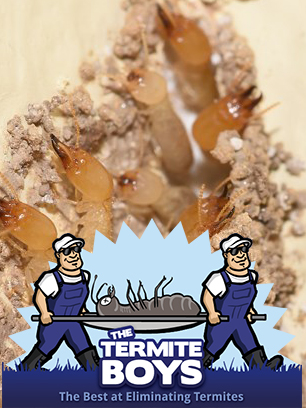Termites have long been infesting timber-framed structures in the United States, but surprisingly, termite control professionals were largely non-existent in America until the 1950s. Although the country-wide termite threat to homes was known to American entomologists before 1900, termite infestations were not nearly as frequent or as costly during this time as they are today. However, the demand for termite-resistant home construction strategies emerged quickly during World War II, as spare lumber was needed for the war effort, as well as for the reconstruction needed afterward. Since every little piece of wood mattered during this time, preventing termites from attacking homes became a priority for the US Government. Also, during the early 20th century, the architectural style of homes changed in America, and unfortunately, the new architectural style at this time made homes more vulnerable to termite attacks. Due this architectural change, homes that were located along the east coast from Massachusetts downward saw a tremendous increase in termite infestations.
The use of sapwood from second-growth trees became the primary source of construction lumber in the eastern US during the late 19th and early 20th centuries. This became a problem, as sapwood-lumber contains far more moisture than the heartwood-lumber that is used today. This moisture made sapwood particularly attractive to eastern subterranean termites, as subterranean termites require substantial amounts of water in order to survive. Constructing homes with basements also became the norm in the eastern US during this time. The below-ground location of basements allowed for the easy access of subterranean termites. To make matters worse, the introduction of central heating within homes made basements retain a greater degree of moisture, and provided termites with an ideal indoor habitat, resulting in a sharp increase in termite infestations in regions where they had not been a problem before.
In addition to these factors, many homes at the time were built with lumber that made contact with the ground soil, allowing subterranean termites direct access to a home’s timber components. Luckily, no drywood or dampwood termite species exist in Massachusetts, and eastern subterranean termite damage to homes in the state has been greatly reduced by the introduction of construction regulations that require homes to be built in a manner that minimizes the chances of termite attack. Some of these regulations include the mandatory use of pressure-treated lumber sourced from heartwood, a required concrete, stone or other non-wood barrier separating a home’s wood frame from the ground soil, and homes in Massachusetts now have to be constructed to include features that minimize moisture retention. Many of these features concern the manner in which a home is insulated, as well as the particular insulation material used.
Do you take eastern subterranean termite infestations are a serious threat in Massachusetts? Call us today for a termite inspection!

